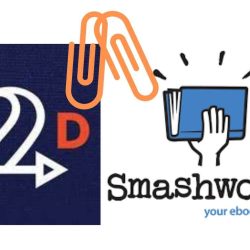
HOW AMAZON CHARTS WILL SHAPE THE SELF-PUBLISHING?
It happened while you were sleeping! On May 18 Amazon introduced the weekly top 20 “Amazon Charts.” In a consumer market (yes, get used to the fact that your book is a sellable product) based on competition and social proof, it was the right thing to do. What is the impact for indie authors and how this new book marketing tool will shape self-publishing overall?
Despite some major self-publishing successes such as Mark Dowson and Bella Andre, solely traditionally-published books are to be found in the top 10 of most sold and most read Amazon charts, with Margaret Atwood’s “The Handmaid’s Tale” topping both of them.

The good news is that two indie authors are making into the most sold fiction charts. A good percentage when we think that self-published authors lack the marketing and financial power of the traditional publishers. Sarah Denzil, an indie author, comes in at number 16, with her mystery and thriller novel Silent Child. As we write this article, the book ranks at number one 8 in Kindle Paid Store. It will be interesting to see the dynamics of the sales and how making to the Amazon Charts will influence overall sales on long term. At number 19, we find Winter Renshaw with her romance novel The Perfect Illusion. The book is currently priced at 99 cents.

If you want to make a living as a self-published author, you need to think business. Breaking into the Amazon Charts is one more detail to consider from now on. But how? Is the 99cents strategy a good one and for how long? What strategies do we need to implement? Perhaps long-term ones that focus on constant, daily sales rather than getting as many downloads as possible during the launch day or week. Margaret Atwood’s book, for example, was originally published in 1986. Another question is how do printed books influence rankings? Most Sold Amazon listings include print editions and digital, while Most Read are based solely on digital formats. How we can use the power of Kindle Unlimited and Prime Reading to get on the Amazon Charts? Here are just a few questions to ponder during the weekend!
In the meantime, the indie community and self-publishing authors salute Amazon’s new initiative. Mark Fine, the author of the critically acclaimed The Zebra Affair and former VP with Polygram, one of music industry’s giants states that it was just about time for this catching-up to be done:
There is an elitist myopia that has blinded the grand publishing houses in New York, London, Los Angeles to a potentially rich trove of emerging literary talent. Ironically, their immature kin–those rowdy record labels based out the same cities have not made the same mistake. Without the Indie music scene with its rich, envelope-bending creativity we would not have had rap, grunge, or for that matter Elvis Presley. Yes, Sun Records was an Indie label. Record companies exploited this ‘farming league’ of emerging talent–and recruited artists with ‘Indie cred’ up into the majors. This dramatically reduced A&R (Artist & Repertoire) costs as nothing shows commitment more than an artist prepared to write, produce, publish and promote their own words. I’m not questioning the need for a Filter (to sort the wheat from the chaff) but to assume EVERY independent author is mere vanity press is lazy, asinine and elitist. Speaking of a filter, I applaud Amazon’s introduction of a Book Chart; but there’s some catching up to do, the record industry has been posting Top Independent Charts for years–let’s now innovate in the print publishing business and have a weekly Top Independent Books Chart, too. How about it Amazon and New York Times?
The Amazon Charts are updated weekly yet no sales numbers are public.







